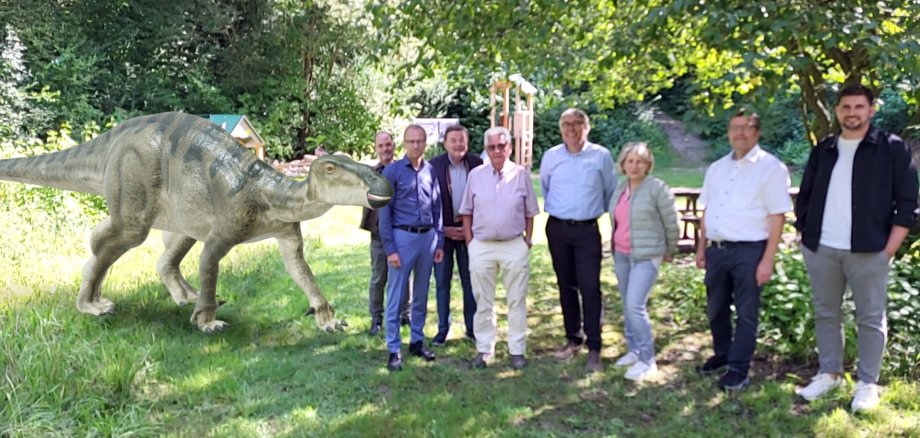New digital highlight in the Geopark: dinosaur tracks in Brilon-Nehden
The GrenzWelten National Geopark has already set a number of milestones in digital knowledge transfer with the virtual reality at the Korbach Fissure and in the Hohenäcker quarry in Frankenberg, as well as the Georg Viktor Tower PANORAMA on the Eisenberg near Goldhausen. Now another digital highlight has been added: The dinosaur discovery site in Brilon-Nehden has been transformed into an adventure site for young and old alike, where you can finally encounter a "real" iguanodon on dinosaur tracks.
Those who embark on a voyage of discovery at the entrance to the site are led along a path of "dinosaur tracks" to the actual discovery site. Along the way, information boards provide information about the dinosaurs and the geology of the region; play equipment, benches and tables invite visitors to linger.
Behind the QR codes on the information boards is a digital scavenger hunt - the aim is to learn about the iguanodon and its habitat in a playful way and by answering questions. Little by little, a digital dinosaur can be found along the way, which is to be reared and reveals its special features. At the end of the "dinosaur tracks", an extensive 360° panorama and a 3D animation of the dinosaur (augmented reality) await as a reward. Using a smartphone or tablet, the Cretaceous period comes to life in the real place.
The project was financed by LEADER funds. The project organiser is the Brilon Heritage Association - Semper Idem. It realised the project together with Museum Haus Hövener, the National Geopark GrenzWelten and other regional stakeholders.
Background
The dinosaur site in the former calcite quarry near Brilon-Nehden is a palaeontological monument. In 1978, palaeontologists found the bones of Iguanodon and, for the first time, Iguanodon juveniles. The different age stages allow unique comparisons of dinosaur development and make the site one of the most important and richest dinosaur archaeological sites in Central Europe. When fully grown, Iguanodon could reach a size of 8-10 metres. The herbivores, which moved in large herds, are also known as the "cows of the Cretaceous". The distinctive "thumb spike", which Iguanodon probably used to defend itself from attackers, is striking
